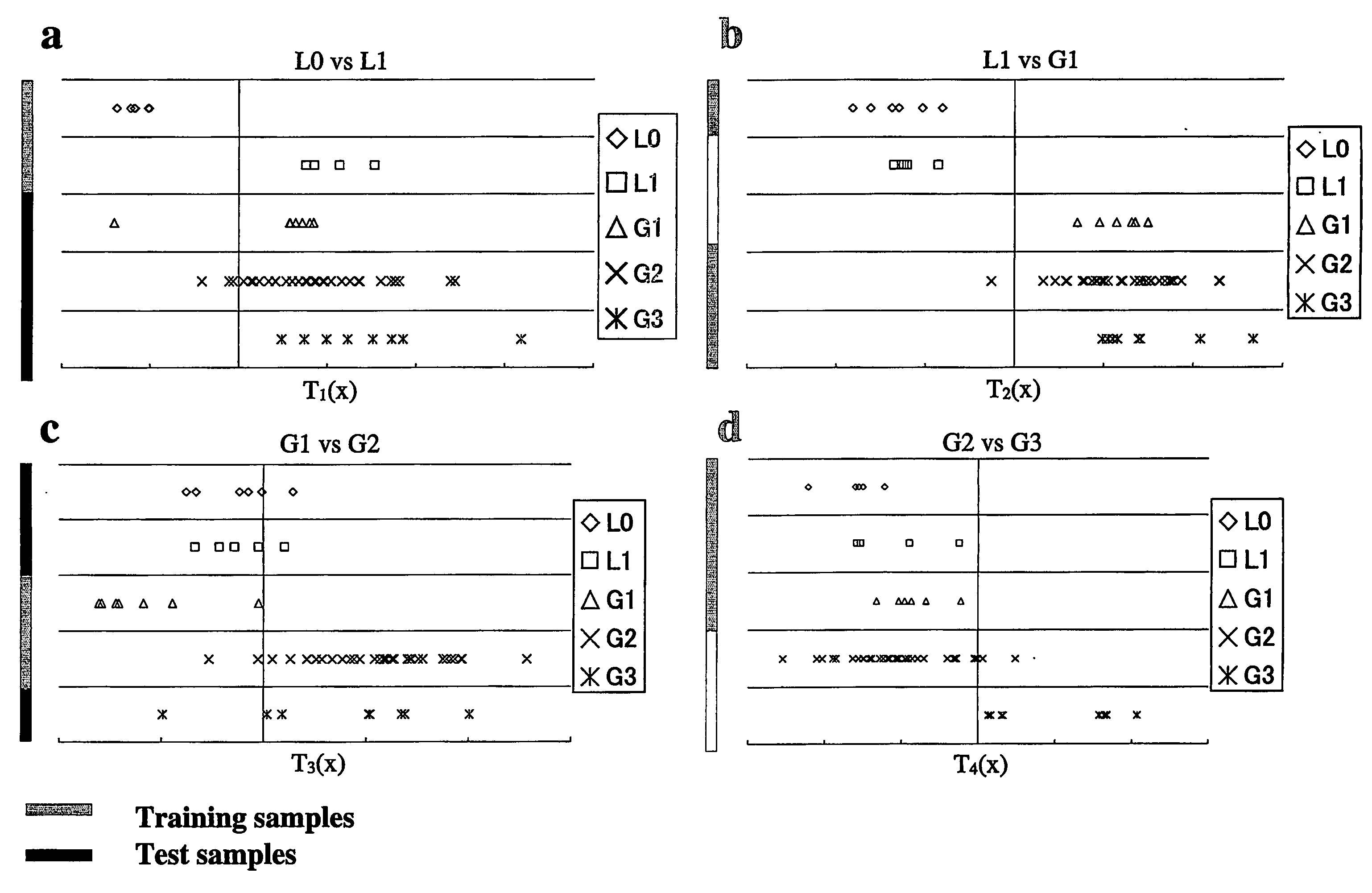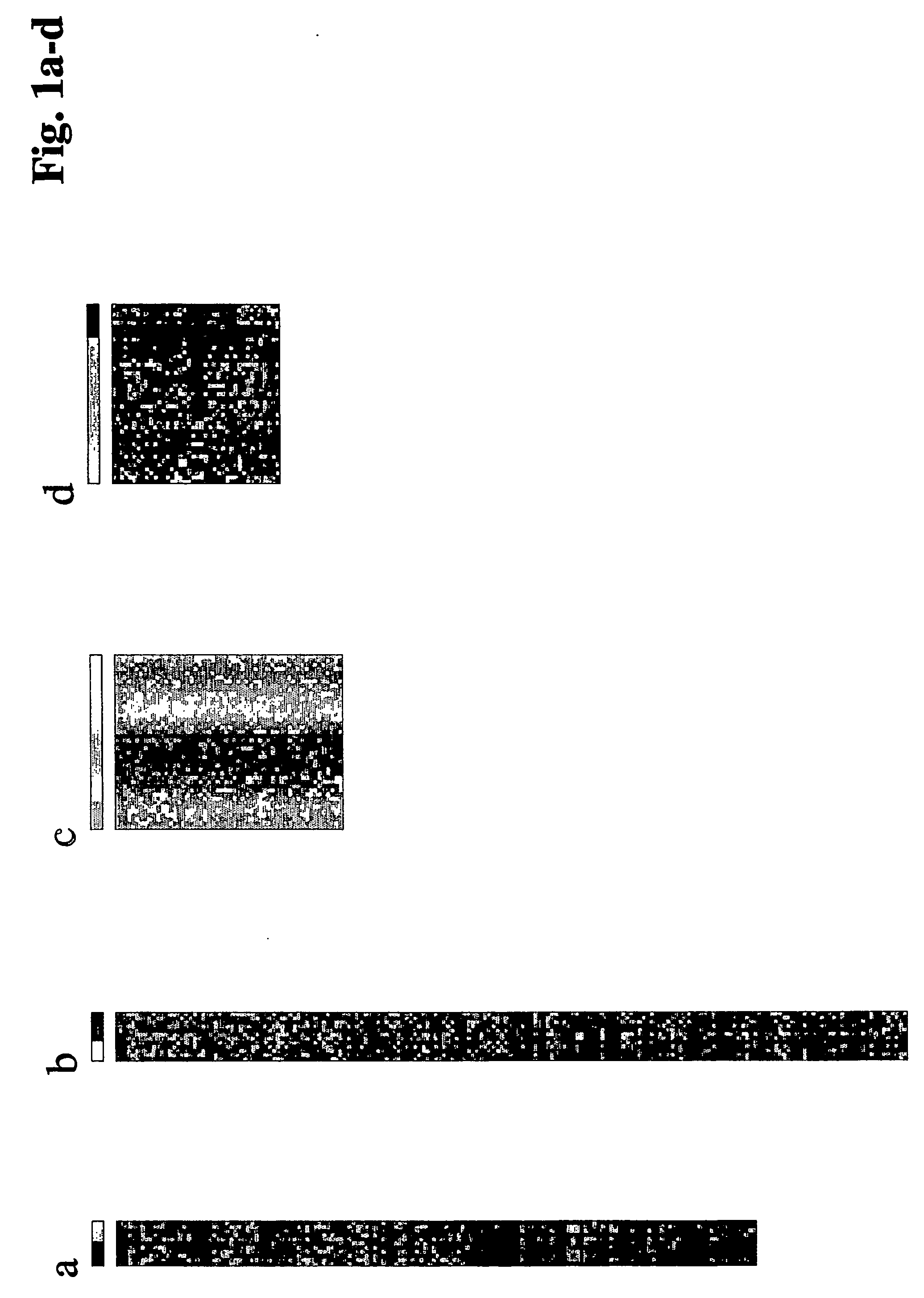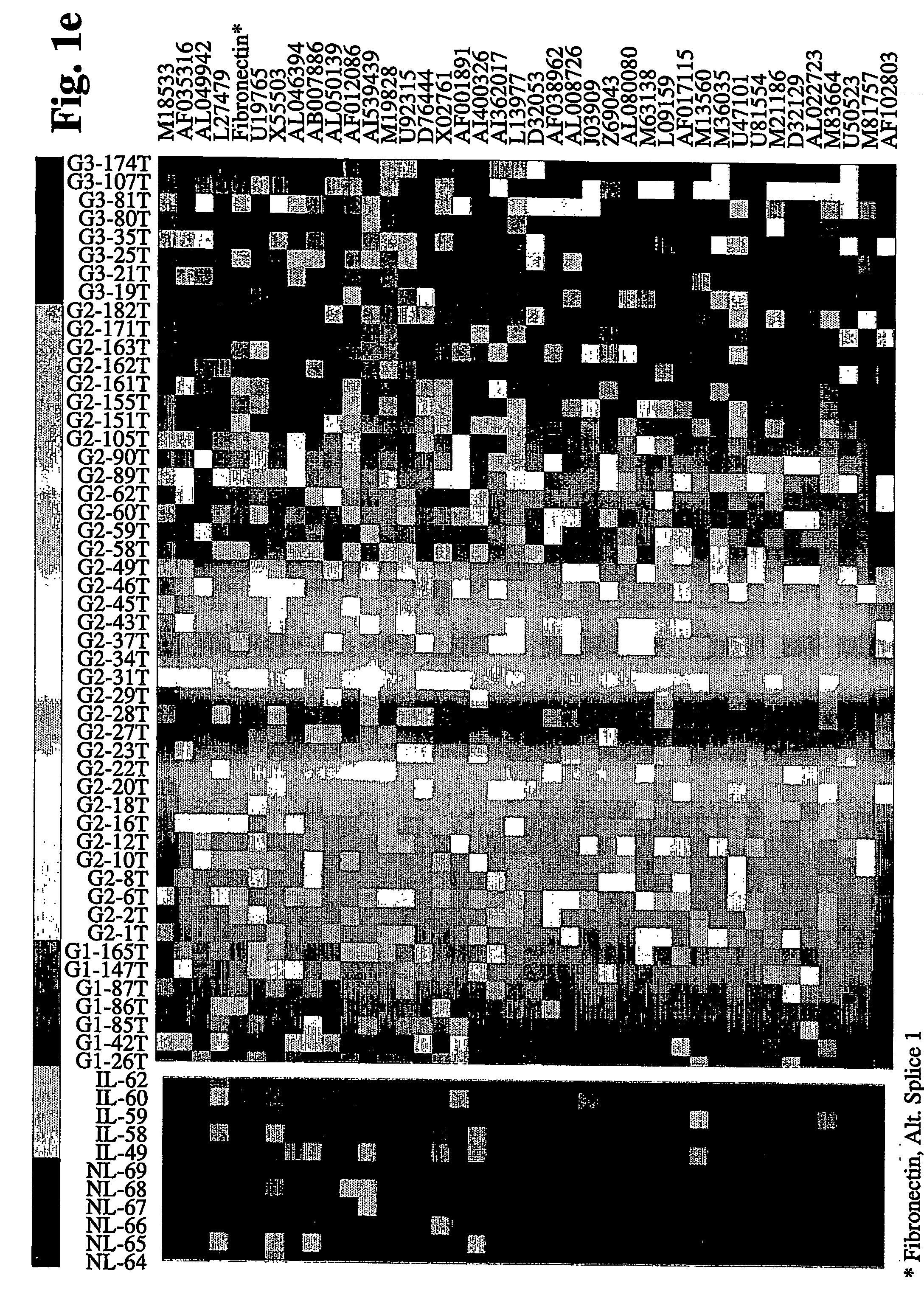Method of Defining the Differentiation Grade of Tumor
- Summary
- Abstract
- Description
- Claims
- Application Information
AI Technical Summary
Benefits of technology
Problems solved by technology
Method used
Image
Examples
example 1
Preparation of Human Tissues
[0045] Fifty patients underwent surgical treatment for HCC at Yamaguchi University Hospital between May 1997 and August 2000. Written informed consent was obtained from all patients before surgery. The study protocol was approved by the Institutional Review Board for the Use of Human Subjects at the Yamaguchi University School of Medicine. All of the 50 patients were seropositive for HCV antibody (HCVAb) and seronegative for hepatitis B virus surface antigen (HBsAg). A histopathological diagnosis of HCC was made in all cases after surgery. This histopathological examination showed that seven patients had well differentiated HCC (G1), 35 had moderately differentiated HCC (G2), and the remaining eight had poorly differentiated HCC (G3). Clinicopathologic factors were determined according to the International Union against Cancer TNM classification. Fisher's exact test, Student's t test, and Mann-Whitney's U test were used to elucidate the differences in cl...
example 2
Clinicopathologic Characteristics of HCCs
[0047] Histological examinations showed that, among the 50 HCV-associated HCCs enrolled in this study, seven were well differentiated HCC (G1), 35 were moderately differentiated HCC (G2), and the remaining eight were poorly differentiated HCC (G3) (Table 2). The tumor size of G2 and G3 HCCs was significantly larger than that of G1 HCC (p=0.0007 and p=0.028, respectively, by Mann-Whitney's U test). The incidence of vessel involvement in G2 and G3 HCCs was significantly higher than that in G1 HCC (p=0.038 by Fisher's exact test). In parallel to dedifferentiation from G1 to G3, tumor stage was more advanced (p=0.066 by Fisher's exact test). Thus, each type of G1, G2, and G3 HCCs enrolled in this study showed characteristics corresponding to dedifferentiation, i.e., tumor size, metastatic potential, and tumor stage, as proposed by Kojiro (Kojiro, M. Pathological evolution of early hepatocellular carcinoma, Oncology 62, 43-47 (2002)).
example 3
Extraction of the RNA from Tissues
[0048] Pieces of the tissues (about 125 mm3) were suspended in TRIZOL (Life Technologies, Gaithersburg, USA, Catalog No. 15596-018) or Sepasol-RNAI (Nacalai tesque, Kyoto, Japan, Catalog No. 306-55) and homogenized twice with a Polytron (Kinematica, Littau, Switzerland) (5 sec at maximum speed). After addition of chloroform, the tissues homogenates were centrifuged at 15,000×g for 10 min, and aqueous phases, which contained RNA, were collected. Total cellular RNA was precipitated with isopropyl alcohol, washed once with 70% ethanol, and suspended in DEPC-treated water (Life Technologies, Gaithersburg, USA, Catalog No. 10813-012). After treated with 1.5 units of DNase I (Life Technologies, Gaithersburg, USA, Catalog No. 18068-015), the RNA was re-extracted with TRIZOL / chloroform, precipitated with ethanol, and dissolved in DEPC-treated water. Thereafter, small molecular weight nucleotides were removed by using RNeasy Mini Kit (QIAGEN, Hilden, German...
PUM
| Property | Measurement | Unit |
|---|---|---|
| Fraction | aaaaa | aaaaa |
| Mass | aaaaa | aaaaa |
| Digital information | aaaaa | aaaaa |
Abstract
Description
Claims
Application Information
 Login to View More
Login to View More - R&D
- Intellectual Property
- Life Sciences
- Materials
- Tech Scout
- Unparalleled Data Quality
- Higher Quality Content
- 60% Fewer Hallucinations
Browse by: Latest US Patents, China's latest patents, Technical Efficacy Thesaurus, Application Domain, Technology Topic, Popular Technical Reports.
© 2025 PatSnap. All rights reserved.Legal|Privacy policy|Modern Slavery Act Transparency Statement|Sitemap|About US| Contact US: help@patsnap.com



